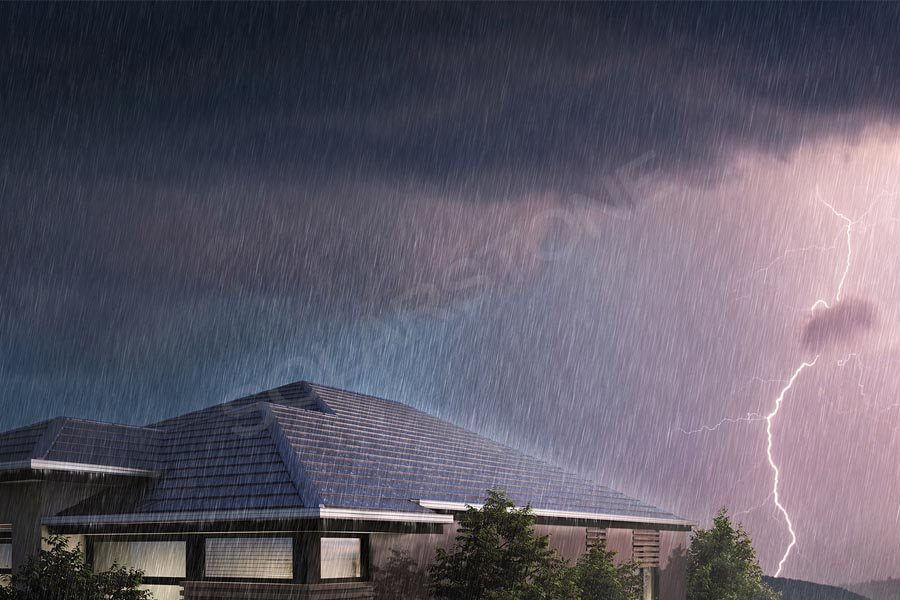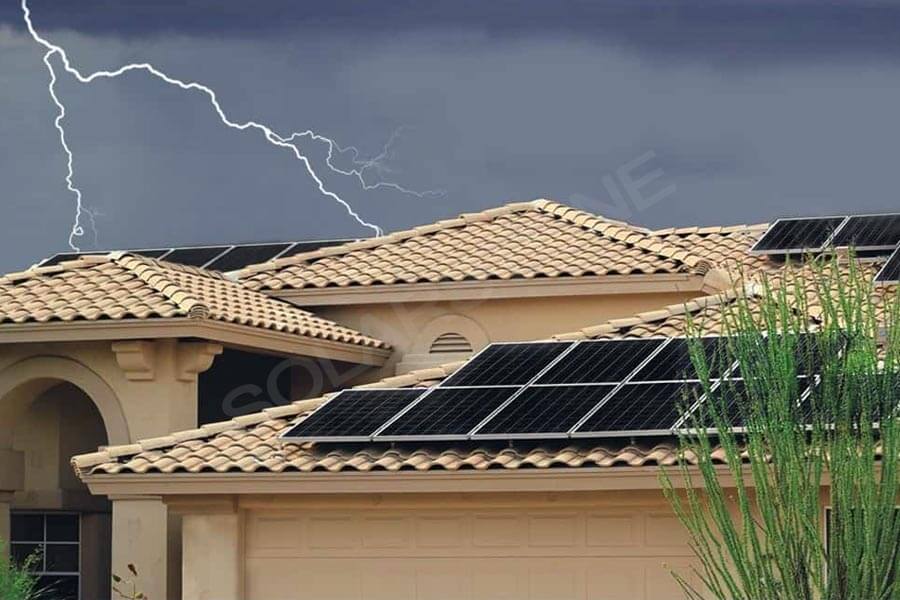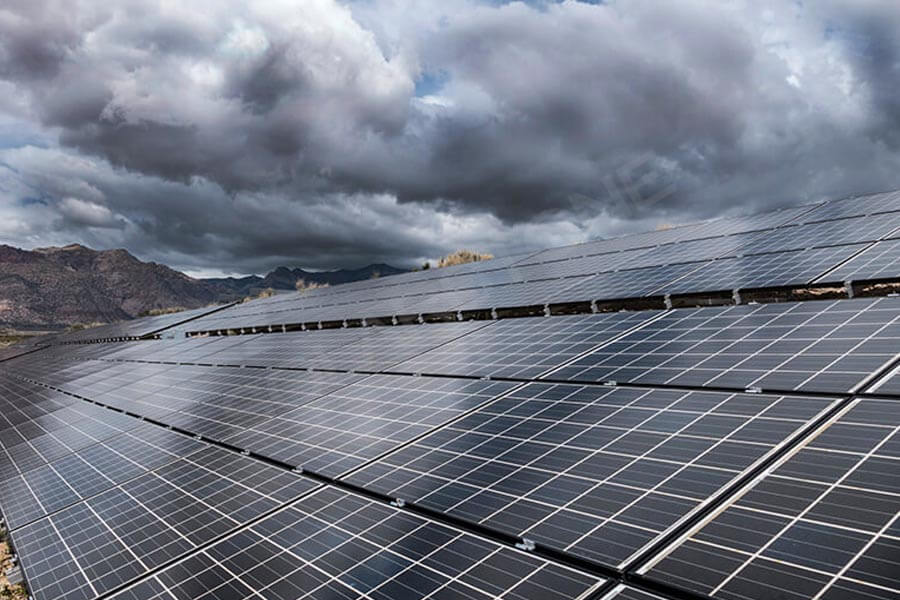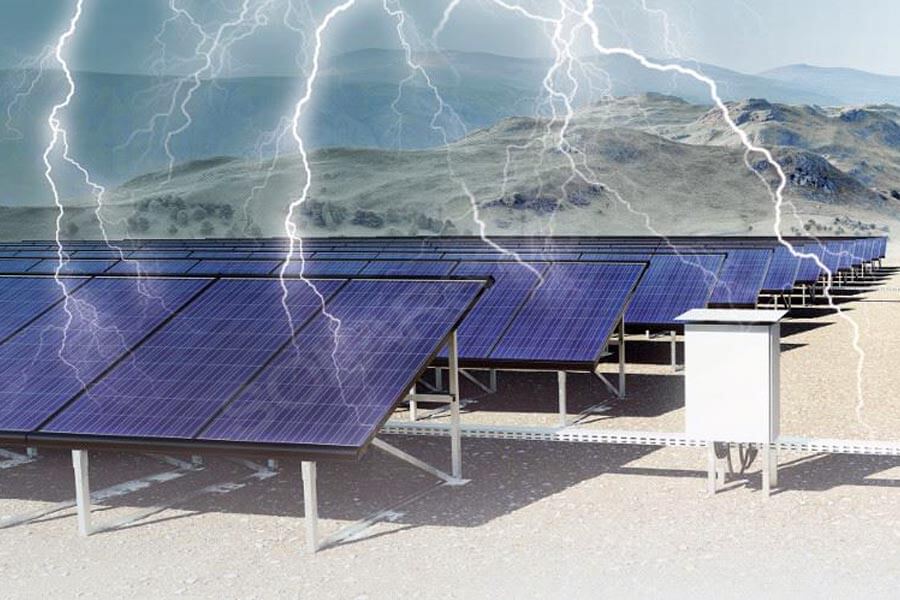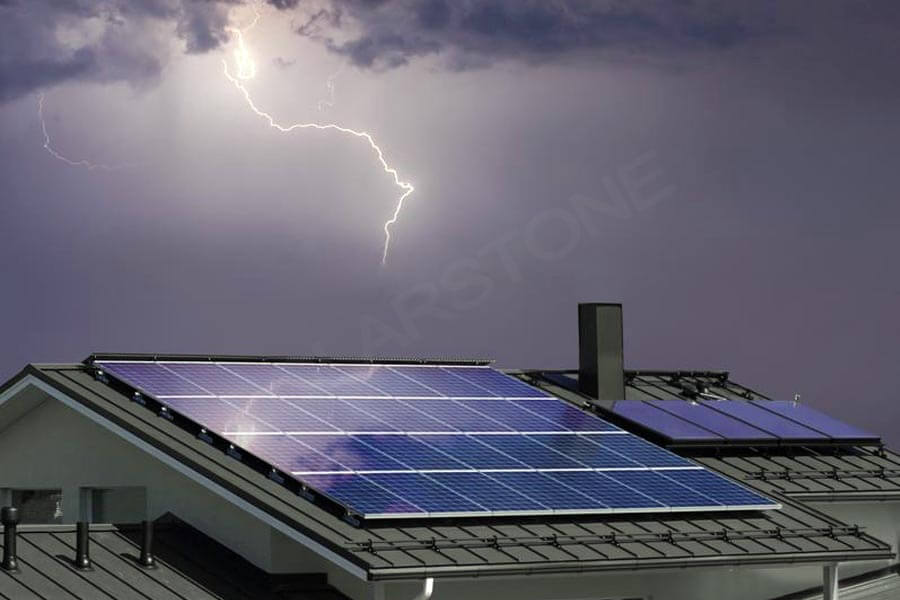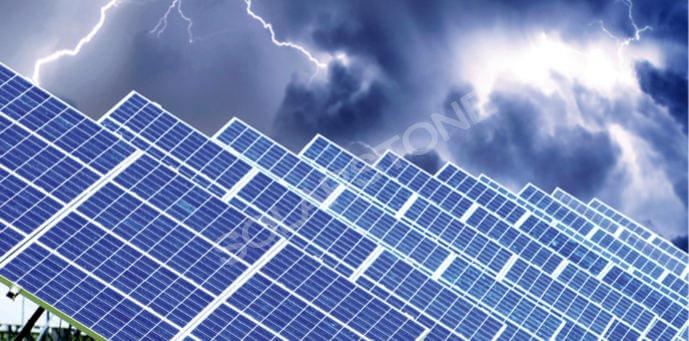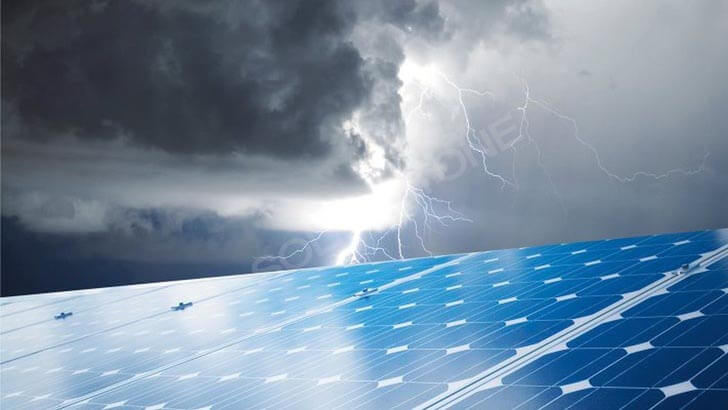The temperature is rising day by day. The pace of summer is getting closer and closer. A large wave of lightning, rainstorm and hail are waiting for us not far away! Can our photovoltaic power station carry it?
What are the impacts of changeable weather in summer on photovoltaic power plants? What should we do to minimize the impact of adverse weather as much as possible?
For roof photovoltaic power station, lightning not only destroys photovoltaic modules and inverters, but also paralyzes the whole system of power grid. Because photovoltaic modules and inverters account for a large proportion of early-stage investment, once subjected to electric shock, the power generation of modules will be reduced, and the total power generation will be reduced.
The inverter may be damaged, increasing the cost of later maintenance. It will not only affect the economic benefits of the owner of the power station, but also endanger personal property and safety.
- Lightning
How to deal with lightning damage?
1. Do a good job in lightning protection. The impact of lightning on photovoltaic power station is divided into two types, namely “direct lightning” and “inductive lightning”. Just like its name, direct lightning strike means that the photovoltaic power generation system is directly struck by lightning; Induction lightning refers to that when lightning strikes nearby, the electric energy generated by lightning strikes is transmitted through the transmission line and grounding wire in the photovoltaic power generation system, and the voltage far exceeding the rated level is applied to the power generation equipment, resulting in damage to the equipment.
As a countermeasure, the junction box and PCS (process control system) are generally equipped with lightning arrester (SPD) to deal with the intrusion induced lightning surge voltage to prevent the power generation equipment from being damaged. Moreover, PCS is also equipped with high-capacity capacitors that can stabilize unstable solar energy, which also plays an important role in suppressing surge voltage.
At the same time, PCS is equipped with overvoltage and overcurrent protection devices, which will disconnect the DC circuit to prevent the expansion of accidents caused by lightning. In addition, optical cables are generally used for the communication of remote monitoring monitors, rather than metal cables vulnerable to lightning strikes.
2. Since the controller and inverter are expensive equipment, level 2 power surge protector shall be installed in the controller and inverter to make it have lightning protection function. If the inverter outputs to some important load equipment, level 3 power surge protector shall also be installed at the output end of the inverter.
Multi level matching should also be considered when installing multi-level SPD in power supply system and electronic system.
3. In the current lightning protection measures, the most effective and extensive method is to connect the metal parts of electrical equipment with the earth. The grounding system consists of four parts: grounding equipment, grounding body, lead-in line and earth. Good grounding is an important basis for the success of lightning protection measures.
- Rainstorm
Rainstorms occur frequently in summer. The impact of heavy rainstorms on the power station mainly comes from the immersion of rainwater in solar panels and electrical equipment. For household distributed photovoltaic power stations, the inclined roof has strong drainage capacity, so it is difficult to have too much ponding, and the impact of rainstorm can be ignored.
The flat roof is really affected. When the rainfall is too large, the solar panels may be soaked by the rain because the support installation of the flat roof is relatively low.
General family roofs have good drainage function, which is the basic requirement of buildings. The drainage capacity of cement flat roof is weaker than that of inclined roof, but under normal circumstances, the flat roof can drain effectively without excessive ponding.
In order to prevent excessive ponding on the flat roof and form a small pond, a set of drainage system can be added before the rainstorm to effectively drain the water. As long as the ponding is not too deep, the impact on the solar panel will be very small.
How to deal with Rainstorm Risk?
In the design, it is necessary to fully consider the fixed load of the roof; If the power station is built on flat ground, geographical and geological factors shall be taken into account, such as the orientation of the site, slope fluctuation, potential geological hazards, ponding depth, flood level, drainage conditions, etc.
In addition, equipment selection is also very important, such as photovoltaic modules, inverters and supports of photovoltaic power stations. At present, the most effective way is to scientifically add a drainage system.
Also, after the storm, electric shock may occur when approaching or contacting the photovoltaic inverter and the connecting part between the solar panel and the power supply cable. The solar panel damaged by flood may have poor insulation and other faults, and there is a risk of electric shock if contacted.
In the process of resuming operation, unarmed operation shall be avoided and anti electric shock measures (using rubber gloves and rubber boots, etc.) shall be taken to reduce the risk of electric shock.
- Hail
Many owners have doubts about whether household photovoltaic power plants can withstand hail? Qualified solar panels in photovoltaic grid connected system must pass strict tests such as 5400pa maximum static load (wind load and snow load) on the front, 2400pa maximum static load (wind load) on the back and the impact of 25mm diameter hail at the speed of 23m / s.
Therefore, hail will not bring harm to photovoltaic power generation system. When selecting power station equipment, we should choose photovoltaic power stations of regular brands.
How to maintain the photovoltaic power station after hail?
After the hail, the smashed photovoltaic module may suffer a lot of damage, some of which can be seen by the naked eye and some of which are hidden inside the module. Therefore, the photovoltaic modules shall be inspected.
The methods to check the fault location of photovoltaic modules generally include locking the heating part with thermal imaging diagram, or checking the fault of broken part and bypass diode with broken wire detector.
Although these methods can lock the location of the fault, it is difficult to find out the condition and cause of the fault. At this time, El inspection can be selected, which can not only lock the fault location in the solar panel, but also effectively determine the cause of the fault, such as PID deterioration, internal crack, poor contact, diode fault, etc. in a high temperature and humid environment.
Therefore, after the hail, the photovoltaic system may be affected. After the photovoltaic module is smashed, if the power generation decreases or other abnormalities occur, the photovoltaic system shall be checked in time to see if it is really damaged. If necessary, it can be sent back to the original factory for testing, so as to replace the damaged module in time.


